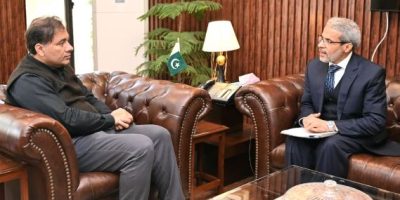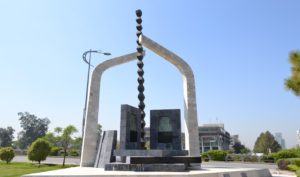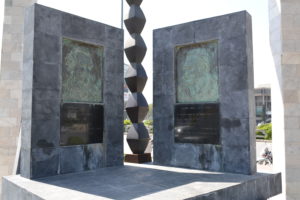Romanian National Culture Day

Every year, Romanian culture day is celebrated on January 15th, honoring the birth of Mihai EMINESCU, Romanians and Moldavians’ national poet. It is difficult to explain why EMINESCU is important for us, but on this day we want to show you few facets of Romanian culture. National Culture Day is just a reason to introduce you to the wonderful Romanian spirit.
Cultural and ethnic diversity
At the crossroads of East and West, Romanian unique identity is the result of ethnical and cultural interferences. Romans and nomadic tribes interfering with Dacians, Slavic people settling around, Greeks and Turks, Hungarians and Germans, Armenians, Jews and Roma – all had their influences on the Romanian language, traditions, architecture or gastronomy.
“A Latin island on a Slavic sea” or a “Latin enclave at the Orient’s gate”, Romania is the only European place where Western traditions meet the Eastern ones, where Romanic, Gothic and Renaissance churches lay in communities together with Byzantine churches, synagogues or mosques. Moldavian style that illustrates our medieval art and Byzantine picture includes Gothic architectural elements coming from the West. While Michelangelo and his disciples painted the Sistine Chapel, anonymous Moldavians painted Voroneț, Arbore or Sucevița monasteries, offering the World similar artistic values. At the end of the 15th century, at the Transylvanian border, near Cluj, a Moldavian ruler built an Orthodox church in a Romanian gothic style, adapted to the location and the locals.
Romania is home for over 20 ethnic minorities, who preserve their language and traditions while living in multi-ethnic communities and enriching thus Romanian culture.
Romanian UNESCO Intangible Cultural Heritage
The folk dance “Calusul” (the wooden mouthpiece of the horse’s bridle) is performed only by men dancers, and transposes a ritual of the pastoral year in popular Pre-Christian calendar, when summer was governed by the horse as a symbol of light and warmth.
Scholastically defined, “doina” is an anonymous, collective creation, orally spread between generations, which encompass music, poetry and dance separately or all together. The story GrigoreLeșe (musician, ethnomusicologist, music PhD and professor at the University of Bucharest) transposes in this Doina is “Miorița”, a pastoral ballad we, Romanians, consider the masterpiece of the folklore.
Craftsmanship of Horezu ceramics is ruled by Horezu red and yellow, and it has specific, easily recognizable, recurrent motifs and elements: roosters, stars, snakes, trees, the double helix, the undulating line, circular strings of folk motives, the tree leaf, the sun, the tree of life. In your journey towards Polovragi Cave, the Transalpina Road or to spend the night in one of the Olteniaculas, it is definitely worthwhile to stop in the small town of Horezu to admire the craftmen works and to buy really special souvenirs for your friends at home.
Men’s group Colindat is a Christmas-time caroling ritual common for Romania and the Republic of Moldova. Young, unmarried men gather on Christmas Eve, stop to every house of the village and perform a festive songs, whose personalized message is adapted to each host’s specific. Of course, a special attention is given to household where unmarried girls live, for they would find a husband in the year to come! This is only one of the many winter traditions we have and we warmly invite you to discover!
On holidays, stage performances or in private events such as weddings, men all over Romania gather in the Lad’s Dance. From 5 to 70 years old, they enjoy performing the dance, which is specific to each ethnicity, community or region.
The Monument of the National Poets of Pakistan (Muhammad Allama Iqbal) and Romania (Mihai Eminescu)
A monument jointly dedicated to Eminescu and Allama Iqbal was erected in Islamabad, Jinnah Avenue, Blue Area, near Kulsum International Hospital, Pakistan on 15 January 2004, commemorating Pakistani-Romanian ties, as well as the dialogue between civilizations which is possible through the cross-cultural appreciation of their poetic legacies.
Mihai EMINESCU, one of the greatest poet of the world, is the most representative ambassador of the spiritual existence of all generations of Romanians, a foremost national poet whose verse expresses the universe of thoughts and feelings of his country fellows.
AllamaIqbal is one of the foremost mentors of the Pakistani nation. Learned in history and philosophy, he employed powerful poetry to penetrate our hearts as well as waken us intellectually to recognition of ourselves as a people with not only a proud heritage but also a potential and capacity to rise to heights of human achievement.
Both lqbal and Eminescu are intensely involved with the history and aspirations of their people. Allamalqbal’s belief in the identity, sovereign will and dignity of the Muslim nation led to the creation of Pakistan through Quaid-e-Azam’s untiring efforts. Mihai Eminescu’s poetry is equally steeped in national sentiment and the rich literary traditions of Romania.
The Monument, erected in the heart of lslamabad (inaugurated on April 29, 2004), represents a combination of some of the specific characteristics of Romanian and Pakistani architecture. Regarding Romania, the Monument integrates an Endless Column, symbolizing the well-known work of the world famous Romanian sculptor Constantin Brancusi, the father of modern architecture.
The 20-foot high Monument, the first of this kind in the Capital city, was made of reinforced concrete, bronze, granite and white marble by an ambitious team of students under the coordination of the well-known Pakistani artist Jamal Shah. The big marble book of the Monument has the effigies of Allamalqbal and Mihai Emineseu in Bronze.
Coinciding with the anniversary of 40 years of diplomatic relations between Pakistan and Romania, this original and beautiful construction is a gift from various Pakistani groups of companies and individuals to citizens of lslamabad.
Related News

Ethiopian Ambassador Dr. Oumer Hussien Oba Assumes New Role in Pakistan
By: ABID SIDDIQUE CHAUDHRY ISLAMABAD, DEC 16 /DNA/ – The Embassy of the Federal DemocraticRead More

Yemen ambassador praises CDA’s work on Islamabad’s development, beautification
ISLAMABAD, DEC 16 /DNA/ – Chairman Capital Development Authority (CDA) and Chief Commissioner Islamabad, MuhammadRead More




Comments are Closed